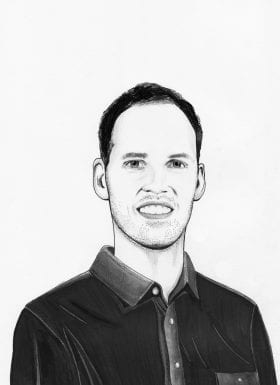-
Ammodo Science
Award for groundbreaking research2024 -
Ammodo Science Award
The Ammodo Science Award for groundbreaking research is intended to stimulate potentially groundbreaking research. Such research is usually the result of team work, and for that reason this Award is for research being carried out by a group of researchers working together, and is intended to recognise the contribution of every member of the group. The Award is presented every two years in four scientific domains: Biomedical Sciences, Humanities, Natural Sciences and Social Sciences.
-
Nomination & Selection
Each edition, the Ammodo Science Award for groundbreaking research includes a cash prize of 1,600,000 euros for each of the science domains Natural Sciences and Biomedical Sciences and a cash prize of 800,000 euros for each of the science domains Humanities and Social Sciences. The rectors of the fourteen Dutch universities affiliated to Universities of The Netherlands (UNL) may nominate a maximum of one research project per scientific domain.
-
Winners
The Ammodo Science Award for groundbreaking research focuses on potentially groundbreaking research and ensures that all researchers involved in the winning project are recognised and rewarded.
Ronald Hanson
Laureate Natural Sciences 2015

Ronald Hanson (1976) studied applied physics in Groningen and undertook research in Leiden and at the Hitachi Advanced Research Labs in Tokyo. He received his doctorate and worked in Delft and then spent time at the University of California in Santa Barbara. He is now Antonie van Leeuwenhoek Professor of Quantum Physics at Delft. In addition to an Ammodo KNAW Award he has also received a NWO Vidi grant and an ERC Starting Grant. Hanson is an alumnus of the Young KNAW.
Research focus
Ronald Hanson researches the fundamental properties of quantum mechanics such as entanglement and possible applications thereof.
“Beam me up, Scotty!”
Quantum Physics is an area which goes beyond everyone’s wildest imagination. It is concerned with a world where something is both a particle and a beam of light, or exists in two places at once.
Some consequences of quantum physics theory even go beyond Albert Einstein’s comprehension. For example the concept of “quantum entanglement”: two electrons in different places whose fate is intertwined so closely that when something happens to one electron, at the exact same time the opposite will happen to its entangled brother.
According to Einstein this sort of ‘spooky action at a distance’ was impossible, because information would travel faster than light.
To produce evidence that quantum entanglement actually does exist, and can be used to transfer information in super-fast quantum computers, is one of the biggest challenges in elementary physics. Ronald Hanson and his research group are in a race for first place with other international scientists.
In 2014 he took a first step towards the proof in an experiment using entangled electrons three meters apart. In 2015 came definitive evidence in a trial in which two electrons at a distance of 1.3 kilometers were shown to be entangled.
The teleportation of matter or people, as happened to Captain Kirk, is not going to happen. But it can happen with information. And that knowledge could have major consequences.
Hanson: “Quantum mechanics was very successful in the last century, but physicists are still debating over fundamental aspects of the theory. Only recently have we been able to research such aspects using quantum mechanical experiments on the scale of the ‘normal’ world. Our successful trial involving entangled electrons at a distance of more than a kilometer was a good example of this. The Ammodo KNAW Award enabled me to take further steps in that direction. I want to try to entangle electrons in multiple diamonds so as to construct a quantum network. Ultimately, using this quantum network I want to examine whether physical influences spread faster than light. I also want to see if we can send information securely without any assumption about how our equipment works. Theoretically it should be possible, but in practice it hasn’t yet worked.”